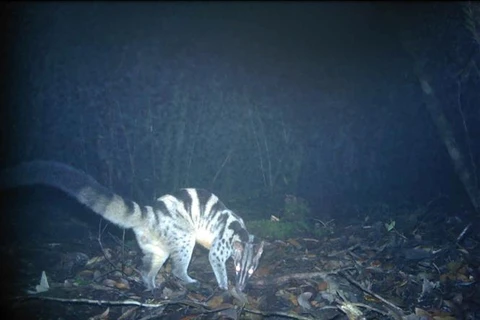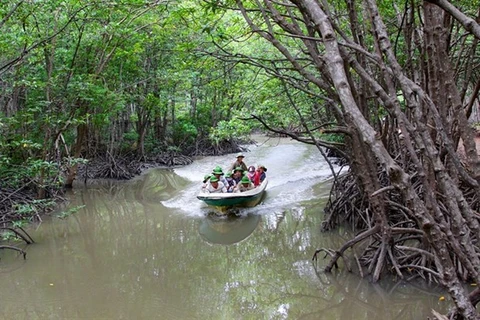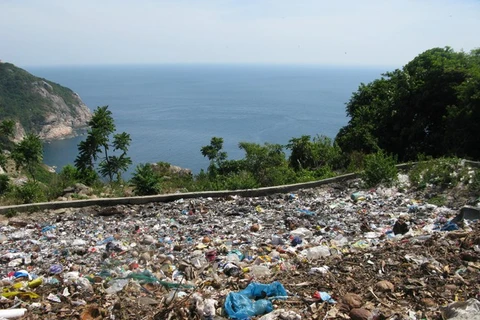 Cu Lao Cham in Tan Hiep island commune, Hoi An city, Quang Nam province seen from above (Photo: VNA)
Cu Lao Cham in Tan Hiep island commune, Hoi An city, Quang Nam province seen from above (Photo: VNA)
Hanoi (VNA) – Vietnam has nine biosphere reserves with a total area of 4 million hectares, accounting for 12.1 percent of the country’s total natural land area. These reserves are home to 1.78 million people.
According to the Vietnam Environment Administration, the nine biosphere reserves, which are located in plains, mountains, coastal areas and islands, are recognised by UNESCO’s Man and the Biosphere Programme (MAB-UNESCO).
Among the nine Southeast Asian countries which have biosphere reserves, Vietnam is second only to Indonesia in the number of biosphere reserves, with the latter owning 11.
However, there is still no document that regulates the management of biosphere reserves, causing loose coordination between ministries and sectors.
Lack of unified organisational structures
The core zones, mostly national parks, nature reserves and special-use forests, account for 11 percent of the total area of the biosphere reserves, about 450,000 hectares. There is high biodiversity concentration with diverse ecosystem services.
Cat Ba archipelago is the smallest biosphere reserve, with an area of 26,241 hectares, while the largest is Western Nghe An with more than 1.3 million hectares.
There is also no common organisational structure for biosphere reserve management boards as each locality follows its own way of organising its board. Meanwhile, a unified management model is important for unifying State management.
The problem is that there are no detailed guidelines from central agencies for the biosphere reserves on the need to strengthen organisational structure and coordinate their operations.
Some biosphere reserves are put under the administrative management of many districts, towns and provinces with large areas and populations, which makes it difficult to manage the reserves.
Dong Nai Biosphere, for example, is located within the administrative boundaries of five provinces and 20 districts, cities and towns. However, the reserve management board comprises only members representing the state, social organisations and the business community of Dong Nai province. Therefore, the activities of the biosphere reserve in the other four provinces are weak.
At present, there is still no document that regulates the management of biosphere reserves. It is also unclear where the fund for the reserve operations is from.
From the aspect of State management, only national parks and national reserves are put under management by the system of agencies from central to local levels.
Building coordination mechanism, perfecting management work
The Vietnam Environment Administration recently urged improvement of management over biosphere reserves by institutionalising the functions, tasks and organisational structure of the management boards.
It is necessary to prioritise including the management of biosphere reserves in the amended 2014 Environmental Protection Law, the agency suggested, adding that decrees and circulars need to be issued to clarify the functions and tasks of relevant ministries, sectors and local authorities.
In addition, related agencies should build an effective coordination mechanism and a close management structure from the central to local levels.
Relevant agencies should prepare dossiers on the recognition of potential biosphere reserves.
It is also important to intensify communications to raise public awareness of the importance of biosphere reserves.
The Vietnam Environment Administration also suggested relevant parties promote the development of databases for biosphere reserves in the national biodiversity database system and attract the engagement of international organisations as well as biosphere reserve assistance projects./.
| Vietnam has nine biosphere reserves: Can Gio Mangrove Biosphere Reserve (2000), Cat Ba Islands (2004), Red River Delta (2004), Kien Giang Coastal and Island Biosphere Reserve (2006), Western Nghe An Biosphere Reserve (2007), Ca Mau Cape (2009), Cu Lao Cham-Hoi An (2009), Dong Nai Biosphere Reserve (2011), and Lang Biang Biosphere Reserve (2015). |
























